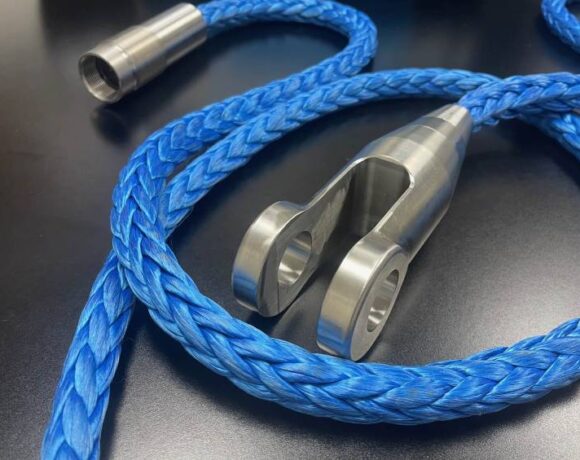Smart Fabrics Can Help You To Navigate The World!

Wearable textile-based device delivers complex, on-the-go haptic input
Wearable textile-based devices have the potential to revolutionize how we interact with technology by utilizing our sense of touch, a largely untapped sensory resource. Researchers at Rice University have developed a novel wearable device that integrates haptic feedback into textiles, offering a more immersive and efficient way to communicate information and navigate the world.

Barclay Jumet is lead author on a study published in Device. (Photo by Brandon Martin/Rice University)
In a recent study published in Device, Barclay Jumet, a lead author and mechanical engineering PhD student, highlighted the limitations of current wearable devices in effectively incorporating haptic communication. These devices often require bulky external hardware to provide complex tactile cues, restricting their practicality in daily activities.
The research team, led by Daniel Preston and Marcia O’Malley, has developed a system of haptic accessories that overcome these challenges by embedding haptic cues directly into the textile structure using fluidic control. This approach reduces the need for complex electronic components, streamlining the device’s design and functionality.
By using fluidic signals such as pressures and flow rates, the wearable device, consisting of a belt and textile sleeves, delivers various haptic sensations like vibrations, taps and squeezes. The system relies on a small carbon dioxide tank attached to the belt, which feeds airtight circuits within the textiles. These circuits inflate quarter-sized pouches on the sleeves with varying force and frequency to create distinct haptic cues.
The device’s capabilities were demonstrated through real-world navigation experiments. Users were guided through a mile-long route in Houston using haptic cues provided by the wearable textiles. In another experiment, participants outlined invisible Tetris pieces by following haptic directions, showcasing the device’s potential for interactive applications.
Jumet emphasized the efficiency of the system’s design, noting that complex haptic cues are embedded into the sleeves, minimizing the number of required electronic inputs. This reduction in complexity enhances user experience and expands the device’s potential applications.
The researchers envision integrating this technology with navigational systems, allowing textiles to provide directional guidance without overburdening visual and auditory senses. Additionally, the device holds promise for assisting individuals with visual or auditory impairments, helping them detect obstacles and navigate dynamic environments.
The haptic textile device could also benefit people with hearing loss who use cochlear implants. By reinforcing auditory information with haptic cues, users can achieve better speech recognition and sound source localization in noisy environments.
Furthermore, the device’s flexibility extends its utility to various scenarios, such as restoring the sense of touch for amputees. Sensors embedded in prosthetics can gather data and transmit haptic feedback to other parts of the body, enhancing the user’s interaction with their environment.
The durability of the device is ensured by using heat-sealable textiles that withstand wear and tear, making it suitable for long-term daily use. The researchers conducted tests involving washing, cutting, and repairing the device, confirming its robustness.
Jumet envisions a future where haptic textiles not only serve medical applications but also contribute to creating a more immersive and interconnected world. The potential for incorporating touch into entertainment experiences, such as movies and games, as well as improving comfort during extended virtual reality use, highlights the wide-ranging impact of this innovative technology.














